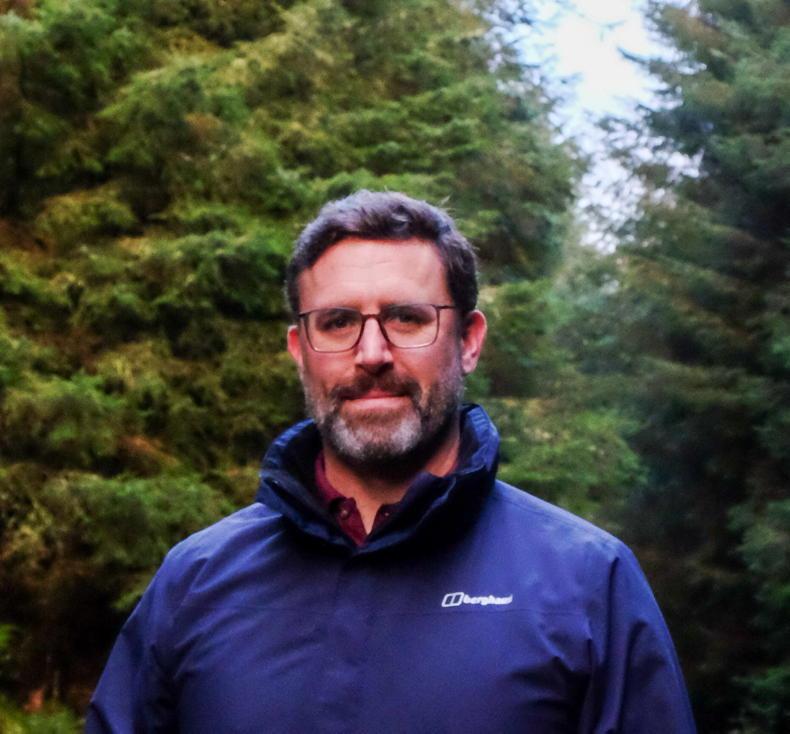The new Forestry Programme 2023-2027 was approved by the Government on 6 September 2023, along with other non-programme actions under the Forest Strategy Implementation Plan.
The new programme is funded to the tune of €1.3bn by the Government.
It is also quite different to previous forestry programmes, and is very ambitious, both in terms of targets, and in balancing economic objectives with wider environmental and social objectives.
The comprehensive package of measures included in the programme will see an increase in forestry premiums of between 46% and 66%, and farmers will receive 20 years of premium payments compared to 15 years for non-farmers. Overall, the programme represents a definitive step towards more diverse, multifunctional forests that strengthen the economic viability of rural communities, protect our environment and are resilient in the face of climate change.
For example, the new Afforestation Scheme 2023-2027 offers landowners a choice of 12 forest types, which cover a broad range of planting options, including native woodland, continuous cover forestry and emergent forests.
From a farmer’s perspective, planting trees as an integral part of a more diverse overall farming enterprise makes financial sense. The new programme offers an array of choice in terms of what and where you can plant on your farm.
Planting a mix of trees, such as oak, birch and holly, will guarantee more than €1,100 per hectare in annual payments for 20 years when established successfully.
Similarly, a well-managed, mixed high forest of mainly spruce with broadleaves delivers an annual payment of €746/ha for 20 years, as well as providing an income from harvested wood, when the forest matures.
Alternatively, keep your livestock on the land with an agroforestry scheme that features payments of €975/ha for 10 years.
Agroforestry schemes essentially provide farmers with support to grow trees on land being used for farming, and can help to maximise income while also generating multiple other benefits, including improved animal welfare (for example through the provision of shelter) and biodiversity. Farmers can also qualify for payments under the Department’s organics scheme.
In addition, there are other measures for small-scale tree planting under the Native Tree Area scheme. This is a really attractive scheme under which you can plant up to one hectare, without a licence, and receive payments of up to €22,000 over a 10-year period.
Combine that with a further hectare of planting for protection of water/riparian zones, where these are present, and your premium payments increase to up to €44,000 over 10 years.
The licence application will include details of what plots are proposed for harvesting and when these events are scheduled to take place
Planting a forest does not affect your entitlements under CAP. You can continue to claim the Basic Income Support for Sustainability (BISS) on your forested land, subject to the terms and conditions of the BISS.
As was the case under previous afforestation schemes, the new scheme is a voluntary land use choice for landowners. It is completely demand-led and the achievement of targets will depend on whether sufficient applications are received.
ADVERTISEMENTSince the Forestry Programme 2023-2027 was launched in September 2023, there is a total of over 2,500ha currently available for planting. Recent trends show that over 80% of applicants under the new afforestation scheme are farmers, with over 40% opting to plant under FT1 native forests and over 40% planting FT12 mixed high forest with mainly spruce and 20% broadleaves.
Turnaround
It is important to note that, since 2020, there has been a significant turnaround in the number of licences issued by the Department.
It is aiming to reduce application turnaround times for all schemes to six months for those not requiring an environmental assessment, and to nine months for those requiring such an assessment.
As regards felling, licences issued by the Department can have an operational period of up to 10 years, with a single felling licence covering multiple events including thinnings, felling and replanting. The licence application will include details of what plots are proposed for harvesting and when these events are scheduled to take place.
In the last two years, the Department has been dealing with a backlog of private felling files and, through increased staffing and operational improvements, has issued around 3,000 private felling licences – almost 1,000 more than the number of applications received during that period.
Progress on the licensing of felling applications, both private and Coillte, is reported in the licensing dashboard on a weekly basis. It covers the total numbers licensed, the area and the estimated volume. Last year’s felling licences covered an area of some 32,000ha of forest land, with a volume, when harvested, of 8.9m cubic metres of logs.







 This is a subscriber-only article
This is a subscriber-only article











SHARING OPTIONS: